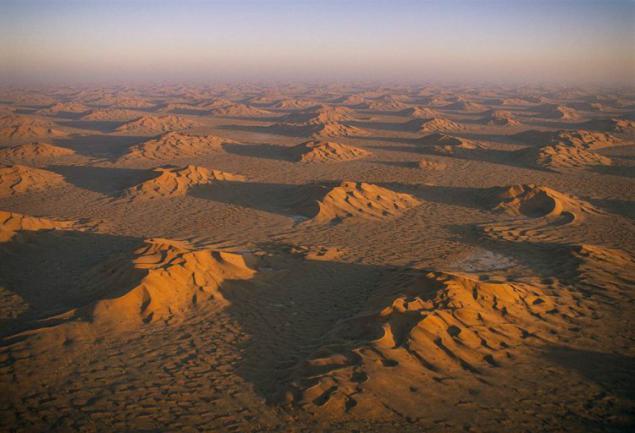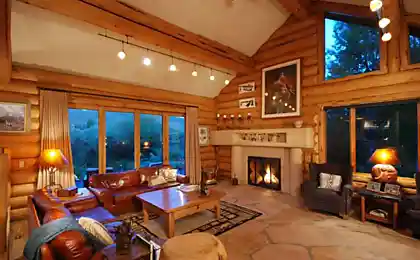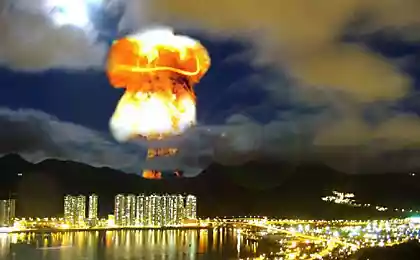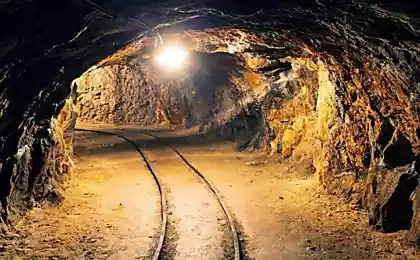1162
View of the desert from the air
Photographer George Shteymets flew on a motorized paraglider over the deserts around the world, from China to Africa and Antarctica, and made stunning pictures. A dozen of them gathered in this release.

1. Valley Kamasay in Chad.
Sandstone hill way through the orange dunes in the region of Tibesti, a few kilometers from the border with Libya. Orange sand formed by the erosion of the Nubian Sandstone.

2. Rub 'al Khali, Saudi Arabia.
Growing alfalfa as feed for animals on the irrigated lands in the desert at the edge of Wadi al-Dawasir. Each circle is almost a kilometer in diameter. Water and fertilizer are sprayed to make the earth a little bit more fertile. Water comes from a well depth of 100-200 meters, where it has accumulated as a result of rains hundreds or even thousands of years ago. Precipitation is already gone for 20 years.

3. Laguna Colorado, Bolivia.
A flock of rare flamingos on lake in Bolivia, which is located at an altitude of 4260 meters in the Andes. The water is colored red algae that thrive thanks to the nutrients contained in the hot springs. On the lake there are several small islands of borax, as well as the largest population of flamingos from all reservoirs desert Altiplano. It is home to three species of flamingo: Andean, Chilean and James flamingos.

4. Parinacota Volcano, Bolivia.
Ice is so unusual shape is formed mainly in the mountainous deserts of the Andes and the Himalayas at an altitude of 6000 meters. Its formation is due to a combination of processes of melting and sublimation, evaporation of ice without the intermediate phase of water. The images show the Parinacota volcano 6342 meters in height. Its elevation above the permanent snow has accelerated in recent decades due to rapid climate change. The left of the Parinacota volcano is Pomerape.

5. Tegidda N'tesum, Niger.
Salt-water pool looks like a mosaic on the surface of the desert. Water from shallow wells is mixed with soil salinity, resulting in a suspension. Colors and shades depend on the color of mud, algae and salt. Salt consumed by local animals.

6. Ounianga Kébir, Chad.
Small huts scattered along the sandy peninsula of Lake Ounianga Kébir, also known as Joa, in northern Chad. People are living right under the palm trees. Fresh water has accumulated here as a result of rains 5,000 years ago, when the Sahara was a wet spot, and stored in large Nubian Sandstone Aquifer, which lies in the central Sahara.

7. Rub 'al Khali, Oman.
Water from time to time out of the mountains and dissolves in the sands. Bedouins still graze their camels here.

8. Dasht-e Lut, Iran.
Megadyuny reach more than 275 meters in height and stretch for more than 880 meters. They are formed as a result of strong winds, raising sand and silt from the place of the dry lake.

9. Dead Sea, Jordan.
The Dead Sea is not only one of the saltiest bodies of water on the planet, but also the lowest point on the Earth's surface. On the Jordanian side of the Dead Sea as a result of waves was formed a thick layer of salt crystals and stalactites.

Tassili du Hoggar 10. Algeria.
Beautiful rocky peaks of natural sculptures formed under the influence of winds harmattanskih Central Sahara.


1. Valley Kamasay in Chad.
Sandstone hill way through the orange dunes in the region of Tibesti, a few kilometers from the border with Libya. Orange sand formed by the erosion of the Nubian Sandstone.

2. Rub 'al Khali, Saudi Arabia.
Growing alfalfa as feed for animals on the irrigated lands in the desert at the edge of Wadi al-Dawasir. Each circle is almost a kilometer in diameter. Water and fertilizer are sprayed to make the earth a little bit more fertile. Water comes from a well depth of 100-200 meters, where it has accumulated as a result of rains hundreds or even thousands of years ago. Precipitation is already gone for 20 years.

3. Laguna Colorado, Bolivia.
A flock of rare flamingos on lake in Bolivia, which is located at an altitude of 4260 meters in the Andes. The water is colored red algae that thrive thanks to the nutrients contained in the hot springs. On the lake there are several small islands of borax, as well as the largest population of flamingos from all reservoirs desert Altiplano. It is home to three species of flamingo: Andean, Chilean and James flamingos.

4. Parinacota Volcano, Bolivia.
Ice is so unusual shape is formed mainly in the mountainous deserts of the Andes and the Himalayas at an altitude of 6000 meters. Its formation is due to a combination of processes of melting and sublimation, evaporation of ice without the intermediate phase of water. The images show the Parinacota volcano 6342 meters in height. Its elevation above the permanent snow has accelerated in recent decades due to rapid climate change. The left of the Parinacota volcano is Pomerape.

5. Tegidda N'tesum, Niger.
Salt-water pool looks like a mosaic on the surface of the desert. Water from shallow wells is mixed with soil salinity, resulting in a suspension. Colors and shades depend on the color of mud, algae and salt. Salt consumed by local animals.

6. Ounianga Kébir, Chad.
Small huts scattered along the sandy peninsula of Lake Ounianga Kébir, also known as Joa, in northern Chad. People are living right under the palm trees. Fresh water has accumulated here as a result of rains 5,000 years ago, when the Sahara was a wet spot, and stored in large Nubian Sandstone Aquifer, which lies in the central Sahara.

7. Rub 'al Khali, Oman.
Water from time to time out of the mountains and dissolves in the sands. Bedouins still graze their camels here.

8. Dasht-e Lut, Iran.
Megadyuny reach more than 275 meters in height and stretch for more than 880 meters. They are formed as a result of strong winds, raising sand and silt from the place of the dry lake.

9. Dead Sea, Jordan.
The Dead Sea is not only one of the saltiest bodies of water on the planet, but also the lowest point on the Earth's surface. On the Jordanian side of the Dead Sea as a result of waves was formed a thick layer of salt crystals and stalactites.

Tassili du Hoggar 10. Algeria.
Beautiful rocky peaks of natural sculptures formed under the influence of winds harmattanskih Central Sahara.
























